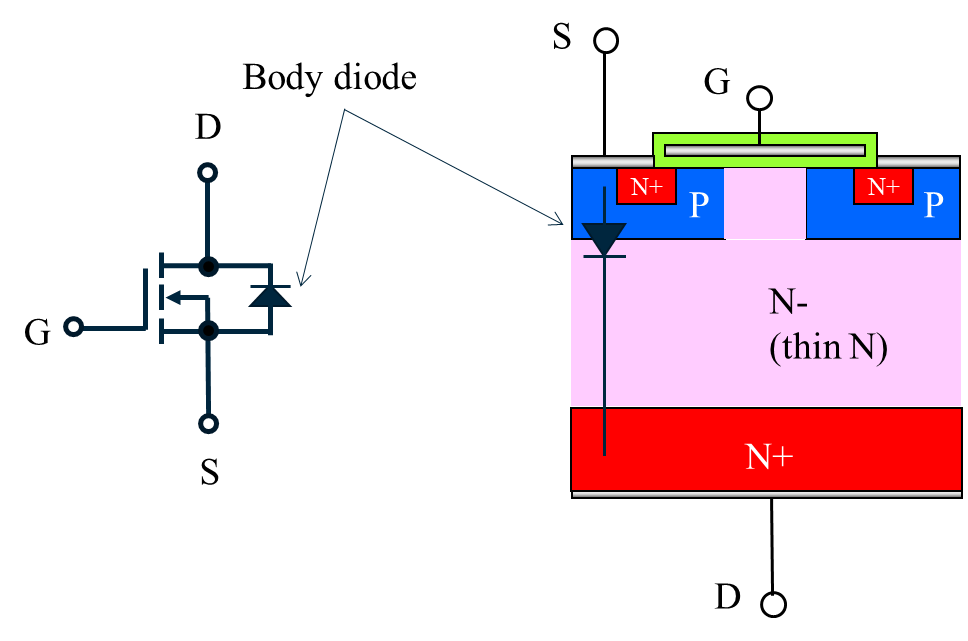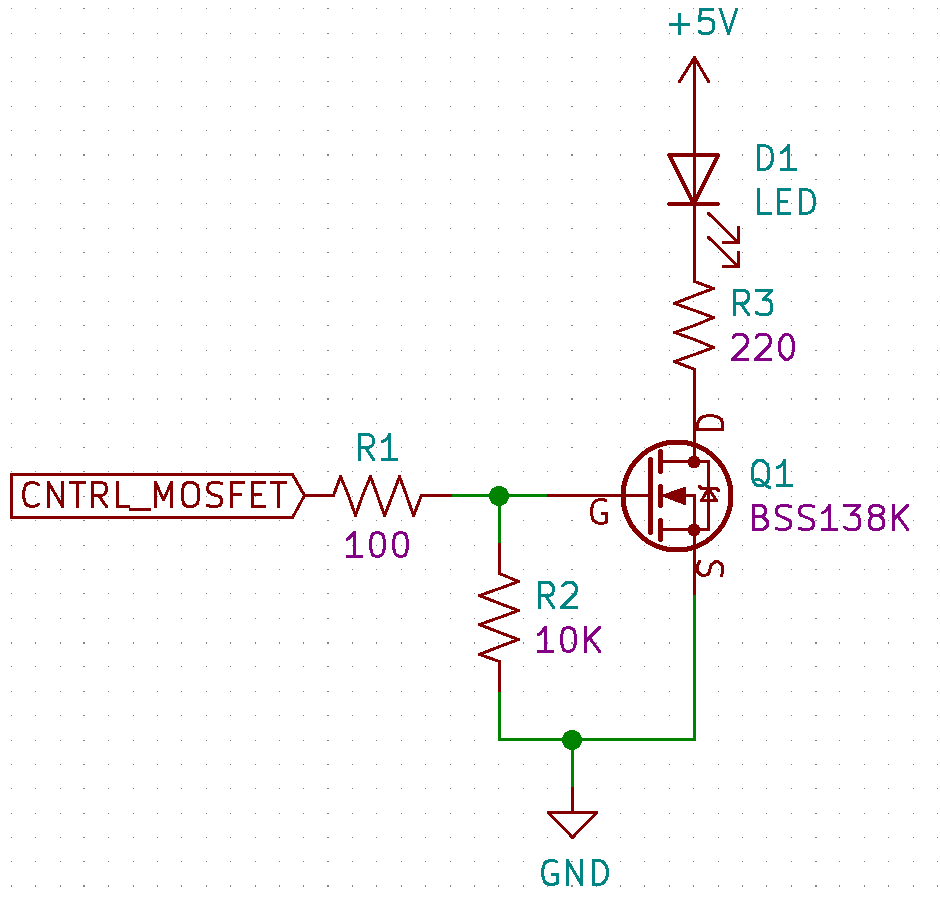Awe-Inspiring Examples Of Tips About When To Use P Type MOSFET

Understanding P-Type MOSFETs
1. What's the Deal with P-Type MOSFETs?
Okay, let's talk P-Type MOSFETs. I know, electronics jargon can sound like another language, but trust me, this is easier to grasp than trying to assemble IKEA furniture without instructions. A P-Type MOSFET, short for P-channel Metal-Oxide-Semiconductor Field-Effect Transistor, is a type of transistor where the channel conducts when the gate voltage is lower than the source voltage. Think of it like a gate that opens when you decrease the water pressure, rather than increase it. Counterintuitive, right? But that's where the magic happens. We are discussing when to use p type MOSFET
Unlike its N-Type cousin which turns on with a positive voltage, the P-Type MOSFET needs a negative voltage at the gate to start conducting. Imagine the gate as a valve controlling the flow of current. When the gate voltage is sufficiently negative (lower than the source), the "valve" opens, allowing current to flow from the source to the drain. When the gate voltage is equal to or more positive than the source, the "valve" closes, and the current stops. So, in essence, it's an "off-by-default" kind of switch.
Now, why bother with this seemingly backward device? Well, P-Type MOSFETs have some tricks up their sleeves that make them essential in certain circuits. They're especially useful in "high-side switching" applications, which we'll delve into shortly, and can simplify power distribution in clever ways. Plus, understanding both N-Type and P-Type MOSFETs gives you a more complete picture of how electronic circuits work. It's like knowing both the accelerator and the brake in a car — you need both to drive properly!
Think of them as the yin to the N-Type's yang. Each has its advantages and preferred use cases, and knowing when to use which is key to designing efficient and effective circuits. We will explore several application on when to use p type MOSFET. Don't worry, we'll keep it light and avoid getting bogged down in too much technical detail. We're aiming for understanding, not a PhD in transistor theory (unless that's your thing, in which case, go for it!).

Driving Leds With Sic Mosfets Power Electronic Tips
High-Side Switching
2. Why Use P-Type on the High Side?
Alright, let's get to the heart of the matter: high-side switching. This is where P-Type MOSFETs really shine. In a high-side switching configuration, the switch (in this case, the MOSFET) is placed between the power source and the load. The "high side" refers to the fact that the switch is connected to the positive voltage rail of the power supply. High-side switching can be particularly useful when you need to control power to a load without disconnecting the ground connection, making it a preferred choice in many applications.
Why is a P-Type MOSFET a good fit here? The answer lies in its "off-by-default" nature. Since it turns on when the gate voltage is pulled low, we can use a simple NPN transistor or even a microcontroller output to control the gate. Essentially, you can switch the load on and off by grounding the gate, which is much easier to manage than trying to supply a higher voltage than the source, which would be necessary for an N-Type MOSFET in the same configuration. This simplifies the driver circuitry significantly.
Imagine you're controlling an LED with a microcontroller. With a P-Type MOSFET in a high-side configuration, you can simply connect the microcontroller's output pin to the MOSFET's gate through a resistor. When the microcontroller output is high, the MOSFET is off, and the LED is off. When the microcontroller output goes low, the MOSFET turns on, and the LED lights up. Simple, elegant, and efficient — just like a well-designed circuit should be. Remember, we are talking about when to use p type MOSFET. It is a simple concept to understand, so let's simplify it.
In situations where you need to isolate the load from the positive voltage rail, P-Type MOSFETs really come into their own. They provide a clean and efficient way to control power distribution, making them a go-to option for many power management applications. Think of it as having a remote control for your electricity, allowing you to turn things on and off with a simple signal. This makes them ideal for battery management systems, power supplies, and other applications where controlling power flow is critical.

N Mosfet схема включения Схемы
Load Switching and Reverse Polarity Protection
3. More Use Cases for P-Type MOSFETs
Beyond high-side switching, P-Type MOSFETs are also handy for load switching scenarios where you want to control the current flowing to a specific device or component. Consider a situation where you have multiple devices sharing a common power supply, and you need to be able to turn each device on and off independently. A P-Type MOSFET can be used as a switch to control the power to each individual device, allowing you to manage their operation without affecting the others. This is commonly found in complex electronic systems, like those in cars. It is quite clear when to use p type MOSFET.
Another clever use for P-Type MOSFETs is in reverse polarity protection circuits. Mistakes happen, and sometimes people accidentally connect batteries or power supplies with the wrong polarity. This can be disastrous for electronic circuits, potentially damaging sensitive components. However, a P-Type MOSFET can be cleverly configured to act as a reverse polarity protection switch. If the polarity is correct, the MOSFET conducts normally, allowing power to flow to the circuit. But if the polarity is reversed, the MOSFET turns off, preventing any current from flowing and protecting the circuit from damage. Think of it as a safety valve for your electronics!
Lets consider a portable electronic device powered by a battery. A P-Type MOSFET can be used as a reverse polarity protection switch. If the battery is connected correctly, the MOSFET conducts, allowing the device to power up. If, however, someone accidentally inserts the battery backward, the MOSFET immediately shuts off, safeguarding the device from any harm. This simple addition can save your electronics from potential ruin, ensuring they continue to function correctly despite accidental polarity reversals. This is essential when to use p type MOSFET.
These protective measures are critical in environments where equipment is handled by less experienced users or where theres a higher risk of accidental misconnections. By integrating P-Type MOSFETs into these designs, engineers can significantly improve the reliability and robustness of electronic devices, minimizing the risk of damage and ensuring longer-term operational stability. They are a small but mighty tool for safeguarding sensitive electronic systems.

P Channel Mosfet
Simplified Circuit Design
4. P-Type MOSFETs Can Reduce Component Count
Sometimes, the beauty of a component lies not just in what it does, but how it simplifies the overall design. P-Type MOSFETs often allow for simpler circuit designs compared to using N-Type MOSFETs in certain applications. This reduction in complexity can translate to fewer components, lower costs, and a more compact circuit board. And let's be honest, who doesn't love a streamlined design? Fewer components mean fewer things that can go wrong, which ultimately leads to a more reliable and robust system. This is another when to use p type MOSFET.
In high-side switching scenarios, as we discussed earlier, the use of a P-Type MOSFET can eliminate the need for complex gate driver circuitry. With an N-Type MOSFET, you'd typically need a boost converter or some other mechanism to generate a gate voltage higher than the source voltage, which adds complexity and cost to the circuit. However, with a P-Type MOSFET, you can often drive the gate directly from a microcontroller or a simple transistor, simplifying the design considerably. This streamlined approach not only reduces the bill of materials but also makes the circuit easier to understand and troubleshoot.
This simplicity extends to applications where you need to switch multiple loads. Using a P-Type MOSFET for each load allows you to control each load independently with a simple control signal, without needing any fancy level shifting or other complicated techniques. This can be particularly useful in applications where you have a limited number of control signals available, such as in embedded systems or battery-powered devices. The less complex your design is, the less likely it is to fail or cause problems down the line. Again, knowing when to use p type MOSFET is essential.
Moreover, simplified designs are often easier to manufacture and test, reducing the time and cost associated with bringing a product to market. By using P-Type MOSFETs strategically, you can streamline your design process, reduce component count, and improve the overall reliability of your electronic systems. This is especially important in today's fast-paced world, where time to market is often a critical factor in determining success.

MOSFET Transistors Types & Circuit Design Reversepcb
Power Efficiency and Thermal Management
5. How P-Type MOSFETs Help Keep Things Cool
Power efficiency is a critical consideration in any electronic design, especially in battery-powered devices and high-power applications. P-Type MOSFETs, like their N-Type counterparts, can contribute to improved power efficiency when used correctly. By minimizing switching losses and conduction losses, these devices can help reduce the overall power consumption of a circuit, extending battery life and reducing heat dissipation. Choosing the right MOSFET for the job — and that often means knowing when to use p type MOSFETs — makes a big difference.
One of the key factors in power efficiency is the on-resistance (RDS(on)) of the MOSFET. This is the resistance of the MOSFET when it is turned on, and it directly affects the amount of power dissipated as heat. Lower RDS(on) values mean less power wasted as heat and higher overall efficiency. When selecting a P-Type MOSFET, it's important to choose a device with a low RDS(on) that is appropriate for your application. Consider a handheld gaming device powered by a battery. Reducing heat can make the device more comfortable to hold and prevent components from overheating.
Efficient thermal management is also essential in preventing overheating and ensuring the long-term reliability of electronic devices. P-Type MOSFETs, when properly heatsinked and cooled, can handle significant amounts of power without overheating. By using thermal simulation tools and careful layout techniques, you can optimize the thermal performance of your circuit and ensure that the MOSFET operates within its safe operating area. In high-power applications, such as power supplies and motor drives, proper thermal management is critical for preventing component failures and ensuring reliable operation.
Ultimately, the goal is to design circuits that are not only efficient but also reliable and long-lasting. By carefully selecting P-Type MOSFETs and implementing effective thermal management techniques, you can create electronic devices that perform well, consume minimal power, and operate reliably even in demanding environments. This not only enhances the user experience but also reduces the long-term cost of ownership by minimizing the need for repairs and replacements. It all starts with understanding the when to use p type MOSFET principles.
